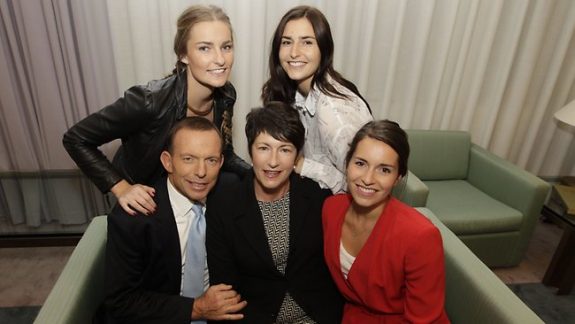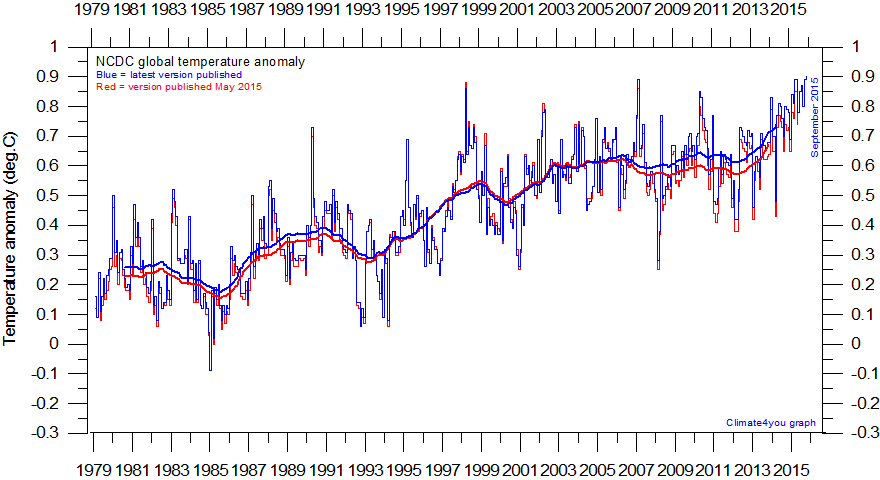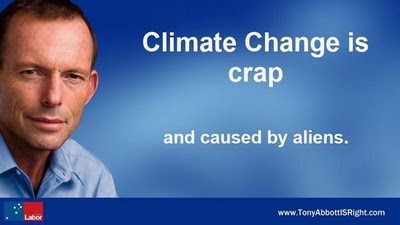What is the Minister for Women’s Affairs going to do for women in this country?

Since forming government we’ve heard a number of Coalition Ministers speak about, or take action on their portfolios. For example, Environment Minister Greg Hunt has shut down the Climate Commission, Minister for Immigration and Border Protection, Scott Morrison, has determined that asylum seekers were now to be referred to as ‘illegals’ and has done his utmost to demonise these poor people, Treasurer Joe Hockey keeps raising the debt ceiling (and his level of stupidity) whilst blaming it on the previous government and Christopher Pyne, the Minister for Education has threatened to overhaul the higher education system and turn public schools independent.
I, and most readers here as well as a large percentage of the wider community have been horrified by their announcements but at least we do know what they’re doing. Not so with the Minister for Women’s Affairs, Tony Abbott. He appears, on the surface, to be as distant from any of the the issues as he is from a probing question.
The Coalition’s September 2013 Policy for Women tells us a little more. Five whole issues fill its pages, being:
- Relocate the Office for Women
- A Real Paid Parental Leave Scheme
- Help Make Child Care More Accessible and Affordable
- Take Further Steps to Reduce Violence Against Women
- Increase the Annual Target for Women at Risk Visa Grants
It’s not a real lot, is it? And it is safe to assume that only a small percentage of the country’s women will benefit from any of these policies, if indeed they are initiated.
There is nothing for the majority of women, or more importantly the disadvantaged women in our society that don’t rate a mention in the above policy document, such as these:
Female workers
The pay packet is always smaller and the gap between what men and women are paid is still widening, according to the latest workplace survey figures. A study carried out by the Workplace Gender Equality Agency (WGEA) found a $266 a week overall difference between what men and women in full-time work earn. There are also proportionately fewer women in key positions in the Australian workforce.
What will the Minister for Women’s Affairs be doing about that?
Mental illness
Women are more likely than men to experience anxiety disorders (18% compared with 11%) and affective disorders (7.1% compared with 5.3%) and are more likely to have anxiety and affective disorders in combination.
What will the Minister for Women’s Affairs be doing about that?
Homelessness
Over 40% of homeless people in Australia are women.
What will the Minister for Women’s Affairs be doing about that?
Lesbian couples
Thousands of lesbian couples in Australia want the opportunity to marry their partner.
What will the Minister for Women’s Affairs be doing about that?
Underemployment rate
In August 2012, the extended labour force underutilisation rate was higher for females than males (15.2% and 11.3% respectively). Not to mention the 350,000 Australian women that are looking for work.
What will the Minister for Women’s Affairs be doing about that?
Indigenous women’s health
Aboriginal and Torres Strait women experience poorer health across all health areas compared with non-Indigenous women.
What will the Minister for Women’s Affairs be doing about that?
Poverty
A 10-year study has found Australia’s most disadvantaged are more likely to be, among others, women.
What will the Minister for Women’s Affairs be doing about that?
All of these are issues that should be a priority for the Minister for Women’s Affairs … if he cares.
My views on the self appointment of Tony Abbott to the Women’s Affairs portfolio are well known, which are based on his out-dated attitudes to women and a complete disregard of their place in modern Australia. Here’s a recap of what I published earlier:
“I think it would be folly to expect that women will ever dominate or even approach equal representation in a large number of areas simply because their aptitudes, abilities and interests are different for physiological reasons.” Tony Abbott Four Corners 15/03/2010.
“While I think men and women are equal, they are also different and I think it’s inevitable and I don’t think it’s a bad thing at all that we always have, say, more women doing things like physiotherapy and an enormous number of women simply doing housework.” Tony Abbott Herald-Sun 06/08/2010.
“I won’t be rushing out to get my daughters vaccinated [for cervical cancer], maybe that’s because I’m a cruel, callow, callous, heartless bastard but, look, I won’t be.” November 9th, 2006
“I would say to my daughters if they were to ask me this question . . . [their virginity] is the greatest gift that you can give someone, the ultimate gift of giving and don’t give it to someone lightly, that’s what I would say.” January 27th “The problem with the Australian practice of abortion is that an objectively grave matter has been reduced to a question of the mother’s convenience.” 2010
It has been revealed that after having being defeated by Barbara Ramjan for the SRC presidency, Tony Abbott approached Barbara Ramjan, and after moving to within an inch of her nose, punched the wall on both sides of her head. news.com.au 09/09/2012
‘I think there does need to be give and take on both sides, and this idea that sex is kind of a woman’s right to absolutely withhold, just as the idea that sex is a man’s right to demand I think they are both they both need to be moderated, so to speak’ cited 23/08/2012
Gaining momentum across everywhere but the mainstream media are allegations that Opposition leader Tony Abbott inappropriately touched Aboriginal author Ali Cobby Eckerman in an Adelaide cafe last March. First Nations Telegraph 20/06/2013.
Tony Abbott urges women to save their virginity for marriage and reveals mixed feelings about contraception in a new interview. The Australian 25/01/2010.
And who can forget his behavior: standing in front of people as they hold signs calling Julia Gillard a bitch or a slut; rubbing shoulders with people after they’ve said on air that Julia Gillard should be dumped at sea; supporting members of his party who suggested Julia Gillard should be kicked to death. He also failed to reprimand those in his party who said Julia Gillard needed a bullet.
He can’t even address a female by name; it’s either ‘her’, ‘she’, ‘it’ or someone with sex appeal.
I could best describe his elevated appointment as ‘token’. He may prove otherwise, but as the above problem areas suggest he has a lot of work to do to prove it. If not, 100,000s of women in this country will remain disadvantaged and quite frankly, I believe that’s the way it’s going to stay. Unless of course, Abbott’s Number One policy of relocating the Office for Women turns out to be the most social and economic reforming program ever enacted in this country.
Like what we do at The AIMN?
You’ll like it even more knowing that your donation will help us to keep up the good fight.
Chuck in a few bucks and see just how far it goes!
Your contribution to help with the running costs of this site will be gratefully accepted.
You can donate through PayPal or credit card via the button below, or donate via bank transfer: BSB: 062500; A/c no: 10495969












